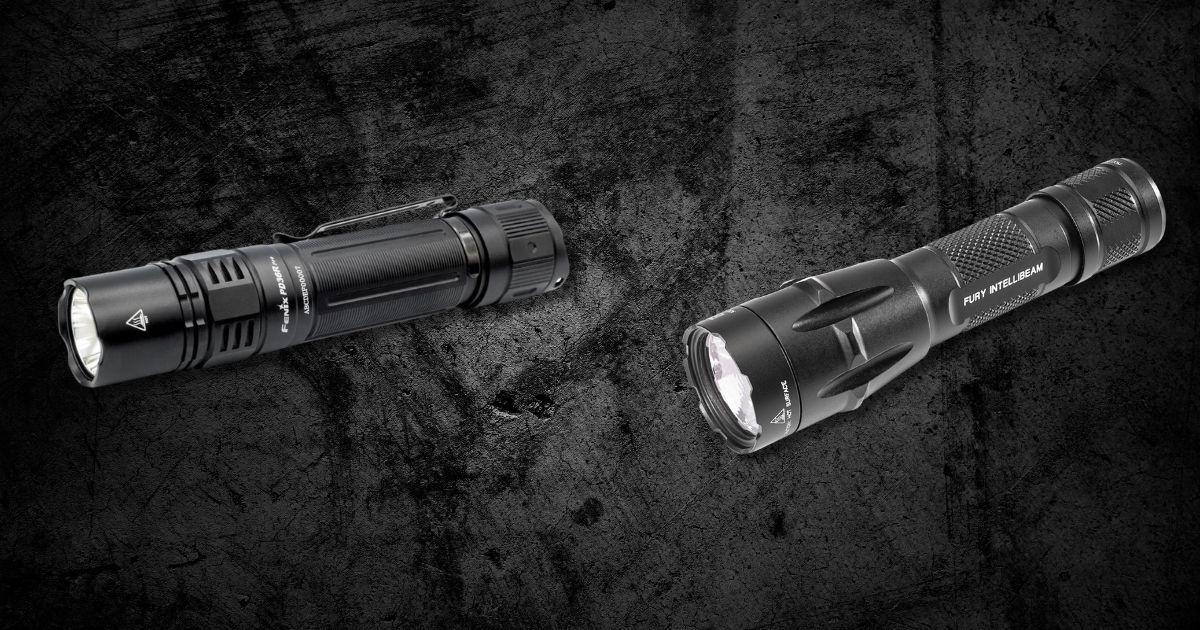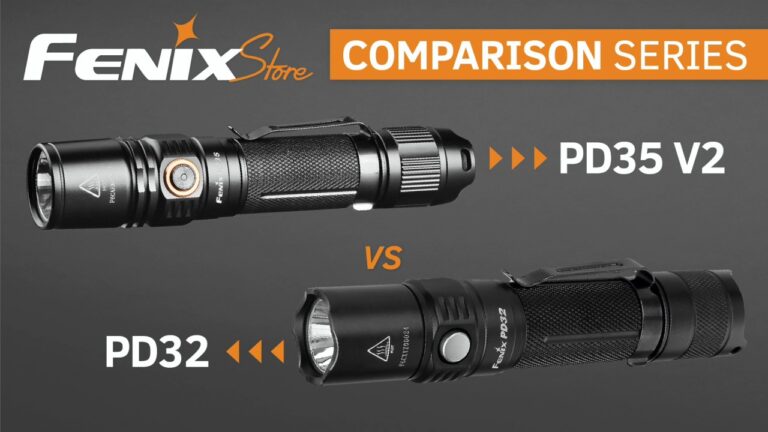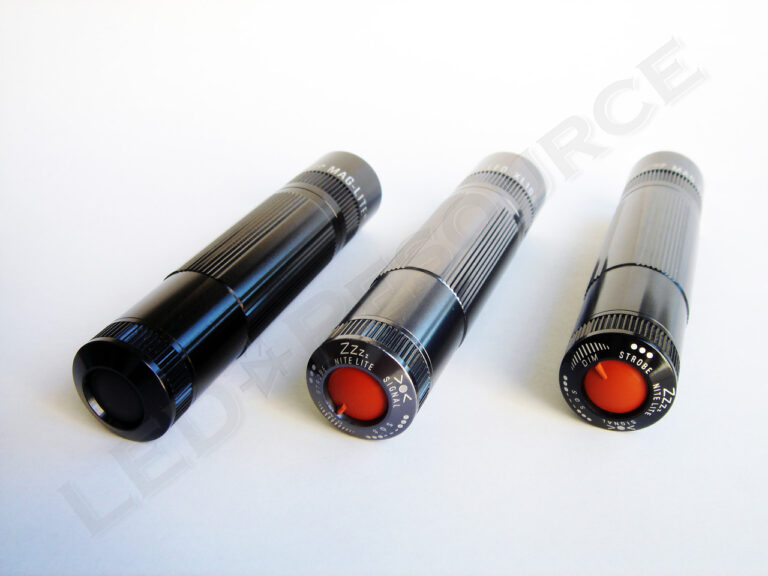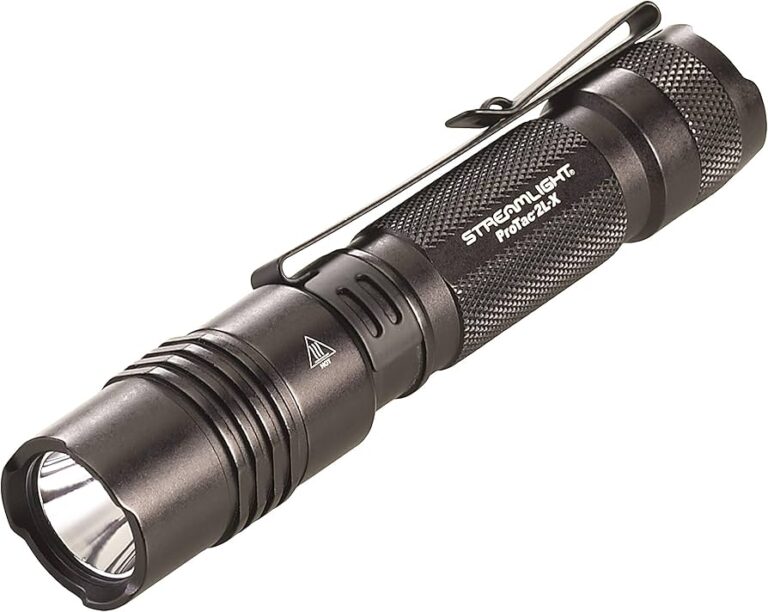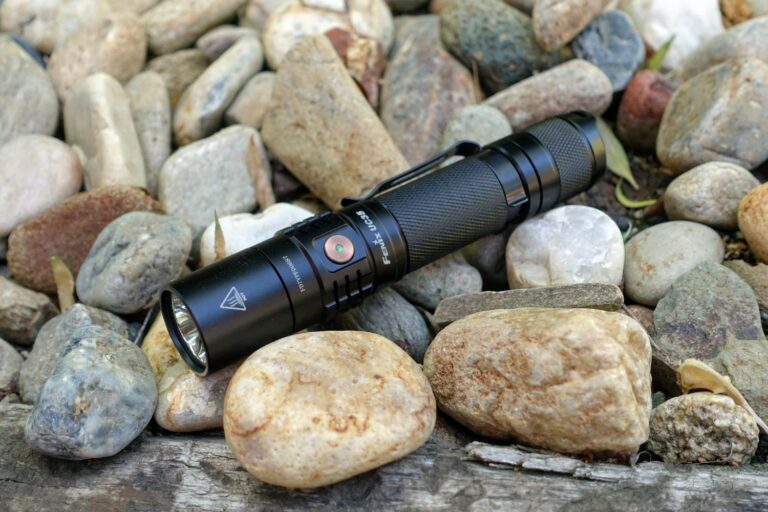Fenix vs SureFire Flashlights: An In-Depth Comparison
In today’s fast-paced and unpredictable world, the need for reliable, high-performance flashlights has never been greater. Whether for everyday carry (EDC), tactical applications, or outdoor adventures, the right flashlight can make all the difference.
Two brands that have risen to prominence in this competitive market are Fenix and SureFire. Both companies are known for their commitment to quality, durability, and innovative features, but they cater to slightly different segments of the flashlight market.
Fenix has established a reputation for offering a diverse range of flashlights suitable for outdoor enthusiasts and EDC users, while SureFire is often regarded as the go-to brand for tactical professionals and law enforcement. This article aims to provide a comprehensive comparison of Fenix and SureFire flashlights, exploring their histories, key features, performance metrics, battery options, pricing, and user experiences.
By the end of this analysis, you’ll be better equipped to decide which brand aligns best with your specific needs and preferences.
Table of Contents
- Brand Overview: Fenix and SureFire
- Key Features Comparison
- Brightness and Performance Metrics
- Battery Types and Charging Options
- Pricing and Value for Money
- User Experiences and Common Issues
- Ideal Use Cases for Each Brand
- FAQ Section
- Conclusion
Brand Overview: Fenix and SureFire
Before diving into the specifics of flashlight features, it’s essential to understand the backgrounds of Fenix and SureFire, two leading brands in the flashlight market.
Fenix’s Evolution and Product Range
Founded over two decades ago, Fenix has consistently focused on creating high-quality flashlights that cater to various needs, including tactical use, outdoor activities, and everyday carry. Fenix has built a solid reputation for its reliable, rugged products, with popular models like the PD35 and TK series becoming favorites among outdoor enthusiasts and tactical professionals alike.
The brand’s commitment to innovation is evident in its product line, which includes EDC lights, headlamps, and bike lights, ensuring that there is something suitable for everyone.
SureFire’s Heritage and Tactical Focus
In contrast, SureFire has built its legacy around providing top-tier tactical flashlights primarily for military, law enforcement, and security professionals. Established in 1979, SureFire has earned a reputation for producing highly durable and reliable lights that withstand extreme conditions.
Their products often feature advanced technology tailored for tactical applications, such as weapon-mounted lights and high-intensity illumination. This tactical focus has made SureFire a trusted name among professionals who rely on their gear for critical situations.
Current Market Presence and Popularity
Both Fenix and SureFire maintain a strong presence in the flashlight market, with dedicated user bases and extensive product offerings. Fenix is particularly popular among outdoor enthusiasts and everyday users looking for an all-purpose flashlight, while SureFire is revered in the tactical community for its high-performance offerings.
Each brand has established a distinct identity, with Fenix emphasizing versatility and innovation, whereas SureFire focuses on reliability and tactical performance.
Key Features Comparison
When comparing flashlights, several key features significantly impact user experience and satisfaction. In this section, we will examine the build quality, design, and user interface of Fenix and SureFire flashlights.
Build Quality and Materials
| Brand | Materials | Durability Ratings |
|---|---|---|
| Fenix | Anodized aluminum, high-grade polymers | IP68 waterproof, impact-resistant |
| SureFire | CNC machined aerospace-grade aluminum | IP68 waterproof, impact-resistant |
The build quality of both Fenix and SureFire is exemplary, with each utilizing high-quality materials to ensure ruggedness and durability. Fenix typically employs anodized aluminum combined with high-grade polymers, while SureFire focuses on CNC machined aerospace-grade aluminum.
Both brands boast an IP68 rating, indicating excellent waterproofing and dust resistance, making them suitable for outdoor and tactical use.
Design and Ergonomics
| Brand | Design Features | Weight |
|---|---|---|
| Fenix | Compact, lightweight, various designs | Varies by model |
| SureFire | Tactical, robust, designed for ease of use | Varies by model |
In terms of design, Fenix flashlights are known for their compact and lightweight structures, making them ideal for everyday carry. They offer a variety of designs to cater to different preferences.
SureFire flashlights tend to have a more robust tactical design, often featuring textured grips and intuitive controls for easy handling in high-pressure situations. Both brands focus on user-friendly designs, ensuring that users can operate their lights effectively in various environments.
User Interface and Controls
| Brand | User Interface Type | Control Features |
|---|---|---|
| Fenix | Side switch and tail switch | Multiple brightness levels, strobe mode |
| SureFire | Tail switch | Momentary and constant on, adjustable brightness |
The user interface is crucial for flashlight operation, especially in tactical situations. Fenix generally features a combination of side switches and tail switches for comprehensive control over various brightness levels and modes, including strobe functions for emergencies.
SureFire, on the other hand, focuses on simplicity with a tail switch that allows momentary activation, ensuring quick access to light when needed. Each brand’s user interface is tailored to meet the demands of its target audience, with Fenix offering versatility and SureFire emphasizing speed and reliability.
Brightness and Performance Metrics
Brightness levels and overall performance are fundamental aspects of flashlights, as they directly impact usability in different scenarios. This section will delve into the brightness outputs, beam distances, and performance over time for both Fenix and SureFire flashlights.
Brightness Levels and Modes
| Model | Max Lumens | Modes Available |
|---|---|---|
| Fenix PD35 V3.0 | 1700 | 5 + Strobe |
| SureFire Fury DFT | 1500 | 1 + Strobe |
The brightness levels of both brands showcase their capabilities. The Fenix PD35 V3.0 offers a maximum output of 1700 lumens, with five distinct brightness levels plus a strobe mode.
This versatility allows users to adapt to various situations, whether they need a high-output beam for search and rescue or a low setting for reading. In comparison, the SureFire Fury DFT provides a maximum output of 1500 lumens but typically features a simpler user interface with fewer modes.
While both brands deliver impressive brightness, Fenix’s multiple modes offer greater adaptability for different scenarios.
Beam Distance and Throw
| Model | Beam Distance (m) | Peak Intensity (cd) |
|---|---|---|
| Fenix PD35 V3.0 | 357 | 31900 |
| SureFire Fury DFT | 200 | 25200 |
Beam distance is another critical performance metric. The Fenix PD35 V3.0 boasts a throw distance of 357 meters with a peak intensity of 31900 candela, making it suitable for long-range illumination.
In contrast, the SureFire Fury DFT has a shorter throw distance of 200 meters and a peak intensity of 25200 candela. Thus, Fenix offers a stronger performance in terms of distance and intensity, making it a preferred option for applications requiring long-range visibility.
Performance Over Time
| Model | Runtime on Turbo Mode | Runtime at Lower Modes |
|---|---|---|
| Fenix PD35 V3.0 | 1 hour 25 minutes | Up to 230 hours |
| SureFire Fury DFT | 2 hours | Less than 2 hours |
When evaluating performance over time, Fenix flashlights typically offer longer runtimes compared to SureFire. The PD35 V3.0 can sustain its turbo mode for 1 hour and 25 minutes, providing a balance between high output and reasonable longevity.
In contrast, the SureFire Fury DFT has a runtime of about 2 hours on turbo mode, with lower settings yielding shorter runtimes. This extended performance is a significant advantage for Fenix, particularly for users who require sustained illumination during outdoor activities or emergencies.
Battery Types and Charging Options
The type of battery used in a flashlight can greatly influence its performance and usability. In this section, we will explore the battery compatibility and charging systems employed by both Fenix and SureFire.
Battery Types and Availability
| Brand | Battery Types | Compatibility |
|---|---|---|
| Fenix | 18650, 14500, 16340, CR123A | Compatible with various brands |
| SureFire | 123A | Proprietary batteries |
Fenix offers a wide range of battery options, including 18650, 14500, 16340, and CR123A batteries, which are readily available in the market. This compatibility allows users to utilize standard batteries, enhancing convenience and accessibility.
On the other hand, SureFire primarily relies on proprietary 123A batteries, which can be more expensive and less widely available. This difference in battery types can influence user preferences, particularly for those who prioritize convenience and cost-effectiveness.
Charging Methods and Time
| Brand | Charging Method | Charging Time |
|---|---|---|
| Fenix | USB-C charging port | Approximately 4 hours |
| SureFire | External charger required | Varies by battery |
Charging methods vary significantly between the two brands. Fenix flashlights often come equipped with a USB-C charging port, allowing for convenient charging via standard USB cables.
The average charging time for Fenix models is around 4 hours. In contrast, SureFire typically requires an external charger for their proprietary batteries, which can be less convenient for users who prefer the ease of integrated charging.
This difference in charging capabilities may influence buyers who prioritize user-friendly features.
Battery Life and Sustainability
| Brand | Battery Life (in hours) | Rechargeability |
|---|---|---|
| Fenix | Up to 230 hours | Rechargeable |
| SureFire | Less than 2 hours | Non-rechargeable |
Battery life is another crucial consideration. Fenix models can last up to 230 hours on lower settings, providing exceptional longevity for users who require extended use.
SureFire flashlights often have shorter battery lives, with runtimes typically less than 2 hours on higher settings. Additionally, Fenix’s use of rechargeable batteries enhances sustainability and reduces waste, while SureFire’s reliance on disposable batteries may not align with environmentally conscious consumers.
Overall, Fenix presents a more sustainable option in terms of battery life and rechargeable capabilities.
Pricing and Value for Money
Pricing is always a significant factor when choosing flashlights. In this section, we will analyze the price range of both Fenix and SureFire products and assess their value for money based on features and performance.
Price Range Overview
| Brand | Typical Price Range | Flagship Model Price |
|---|---|---|
| Fenix | $30 – $120 | $79.95 (Fenix PD35 V3.0) |
| SureFire | $50 – $400+ | $249.99 (SureFire E2D Defender) |
The price range of Fenix products is generally more accessible, with models typically ranging from $30 to $120. Their flagship model, the Fenix PD35 V3.0, retails for approximately $79.95, making it a strong contender for those on a budget.
In contrast, SureFire products range considerably in price, often starting at $50 and going up to $400 or more for premium models. The SureFire E2D Defender, for example, is priced at $249.99.
While SureFire offers exceptional quality, Fenix provides comparable performance at a lower price point, making it a more attractive option for many consumers.
Long-term Value and Resale Potential
When considering long-term value, Fenix flashlights are often regarded as a wise investment due to their affordability and solid performance. Users appreciate their durability and versatility, making them suitable for various applications.
Furthermore, as they are not limited to proprietary batteries, replacement costs are generally lower. SureFire, while more expensive initially, has a reputation for quality and longevity, which may appeal to professionals seeking reliable tools.
However, the higher price point can deter casual users. Ultimately, the choice between Fenix and SureFire may depend on individual preferences and intended use.
User Satisfaction and Reviews
User feedback plays a crucial role in assessing the value of flashlights. Fenix users often praise their products for brightness, build quality, and value for money.
However, some users have reported issues with user interfaces and occasional defects. In contrast, SureFire users frequently highlight their exceptional reliability and performance in demanding situations.
While SureFire flashlights command a premium price, many users believe they are worth the investment for their durability and effectiveness. Overall, both brands have garnered positive reviews, but potential buyers should consider their specific needs and preferences when making a decision.
User Experiences and Common Issues
Understanding user experiences can provide valuable insights into the practical performance of flashlights. In this section, we will summarize feedback from users of both Fenix and SureFire, discussing common praises and issues.
Fenix User Feedback
Users of Fenix flashlights often commend their brightness and versatile features. Many appreciate the variety of modes available, allowing users to select the appropriate output for their needs.
However, some users have reported issues with the user interface, particularly regarding the placement of buttons which can be challenging to find in low light conditions. Additionally, there have been occasional complaints about quality control, with reports of defective units.
Despite these concerns, the overall consensus is that Fenix flashlights offer great value for everyday use and outdoor activities.
SureFire User Feedback
SureFire users generally praise the brand for its exceptional reliability and build quality. Many professionals, including law enforcement and military personnel, trust SureFire flashlights for their durability and performance under pressure.
However, some users express concerns about the higher price point and the limited battery compatibility, as SureFire flashlights often require proprietary batteries. While the cost may deter some casual users, those who prioritize quality and dependability often find the investment justified due to the brand’s reputation for longevity.
Common Issues and Complaints
| Brand | Common Issues | User Complaints |
|---|---|---|
| Fenix | Quality control, user interface | Button placement, occasional defects |
| SureFire | Higher price, proprietary batteries | Battery life concerns, limited compatibility |
Both brands have their share of common issues reported by users. Fenix users often mention concerns about quality control and the user interface design, particularly regarding button placement and ease of use in low-light situations.
On the other hand, SureFire users frequently highlight the higher cost associated with their products and the reliance on proprietary batteries, which may present challenges in sourcing replacements. Understanding these common issues can help potential buyers make informed decisions about which flashlight brand best meets their needs.
Ideal Use Cases for Each Brand
Choosing the right flashlight often depends on the intended use case. This section will explore which brand is better suited for specific needs such as tactical use, everyday carry, or outdoor adventures.
Fenix for Everyday Carry and Outdoors
Fenix flashlights excel in everyday carry and outdoor settings due to their lightweight design, versatility, and multiple brightness modes. Models like the PD35 V3.0 are compact and easy to carry, making them ideal for hikers, campers, and everyday users.
The variety of modes available allows users to tailor their lighting needs to different situations, whether it’s illuminating a campsite or finding something in a dark room. Additionally, the affordability of Fenix flashlights makes them accessible for a wide range of users, from casual EDC enthusiasts to serious outdoor adventurers.
SureFire for Tactical and Professional Use
SureFire flashlights are often preferred by tactical professionals and law enforcement due to their robust build quality and reliable performance in demanding environments. The brand’s focus on tactical applications means that their lights are designed for quick activation and consistent performance under pressure.
Users in law enforcement or security often rely on SureFire for their dependability and durability, making them a top choice for situations where reliability is paramount. While they may come at a higher price, the trust placed in SureFire by professionals speaks volumes about the brand’s effectiveness in tactical scenarios.
Recommendations by User Type
For everyday users seeking a reliable and affordable flashlight, Fenix is an excellent choice, especially for outdoor enthusiasts or those looking for versatile lighting options. On the other hand, professionals requiring a dependable tactical flashlight may find that SureFire meets their specific needs better, despite the higher cost.
Ultimately, both brands have strengths that cater to different user preferences, making it essential for consumers to assess their own requirements before making a purchase.
FAQ Section
What are the main differences between Fenix and SureFire flashlights?
The main differences between Fenix and SureFire flashlights lie in their target markets and design philosophies. Fenix focuses on providing versatile flashlights suitable for everyday carry and outdoor activities, often with multiple brightness modes and a more affordable price point.
In contrast, SureFire specializes in tactical flashlights designed for military and law enforcement applications, emphasizing reliability and durability, which often comes with a higher price tag.
Which brand offers better battery life and performance?
Fenix generally offers better battery life compared to SureFire, with models like the PD35 V3.0 providing runtimes of up to 230 hours on lower settings. This extended battery life allows Fenix flashlights to excel in outdoor scenarios where sustained illumination is necessary.
SureFire flashlights, while reliable, often have shorter runtimes, especially on higher brightness settings, which may limit their performance in long-duration applications.
Are Fenix flashlights suitable for tactical use?
While Fenix flashlights are primarily designed for everyday carry and outdoor use, several models, such as the PD35 and TK series, are indeed suitable for tactical applications. They offer features like multiple brightness modes, strobe functions, and robust build quality, making them versatile tools for various situations, including self-defense and tactical operations.
However, users in high-pressure environments may still prefer SureFire for their specialized tactical design and reputation.
How do the prices of Fenix and SureFire flashlights compare?
Fenix flashlights are generally more affordable, with typical prices ranging from $30 to $120, making them accessible to a broader audience. Their flagship model, the Fenix PD35 V3.0, retails for around $79.95.
In contrast, SureFire flashlights usually start at $50 and can go up to $400 or more, depending on the model and features. While SureFire offers exceptional quality, the higher price may deter casual users, making Fenix a more attractive option for those on a budget.
What do users generally prefer about Fenix or SureFire flashlights?
User preferences often hinge on specific needs and use cases. Many users appreciate Fenix flashlights for their versatility, affordability, and range of brightness modes, making them ideal for everyday use and outdoor adventures.
In contrast, SureFire users often prioritize reliability and performance in demanding situations, valuing the brand’s reputation for durability and tactical effectiveness. Ultimately, the choice between the two brands boils down to individual requirements and preferences.
Conclusion
In summary, both Fenix and SureFire flashlights have their unique strengths and weaknesses, making them suitable for different user needs. Fenix excels in providing versatile, high-quality flashlights at a more accessible price point, appealing to everyday users and outdoor enthusiasts.
SureFire, on the other hand, is synonymous with tactical excellence, offering durable and reliable flashlights that meet the demands of professionals in high-pressure situations.
When choosing between the two brands, it’s essential to consider your specific requirements—whether for tactical use, outdoor adventures, or everyday carry. By evaluating the detailed comparisons presented in this article, you can make an informed decision that aligns with your needs, preferences, and budget.
Ultimately, both brands deliver exceptional products, so the choice comes down to personal preference and intended use.

